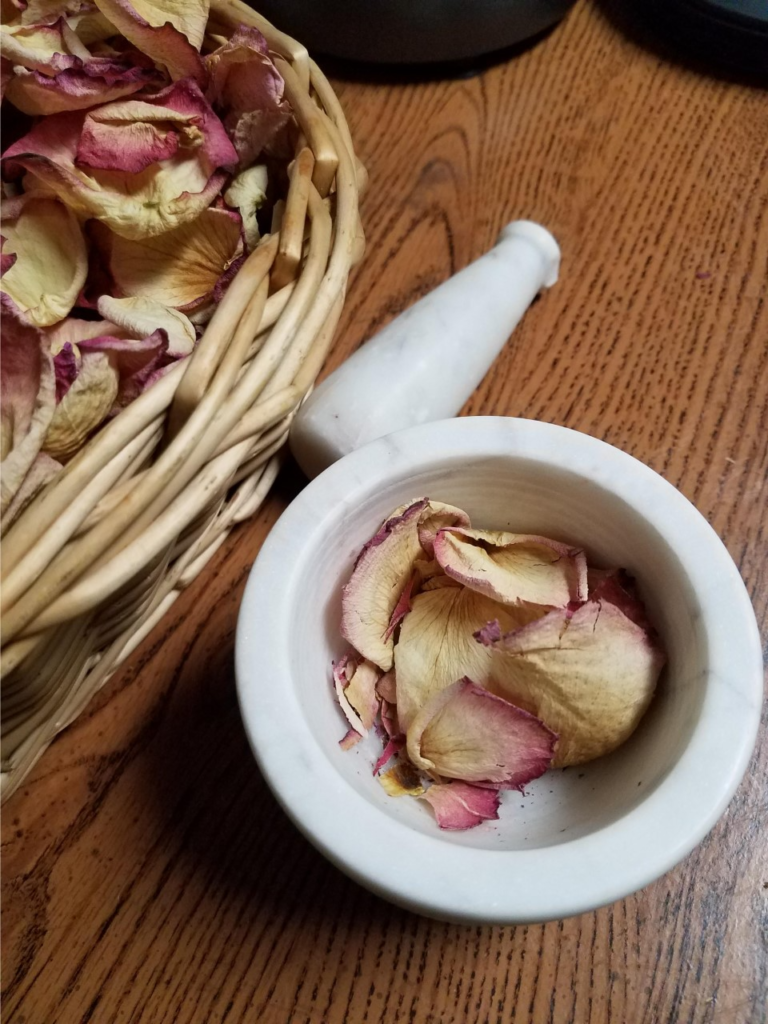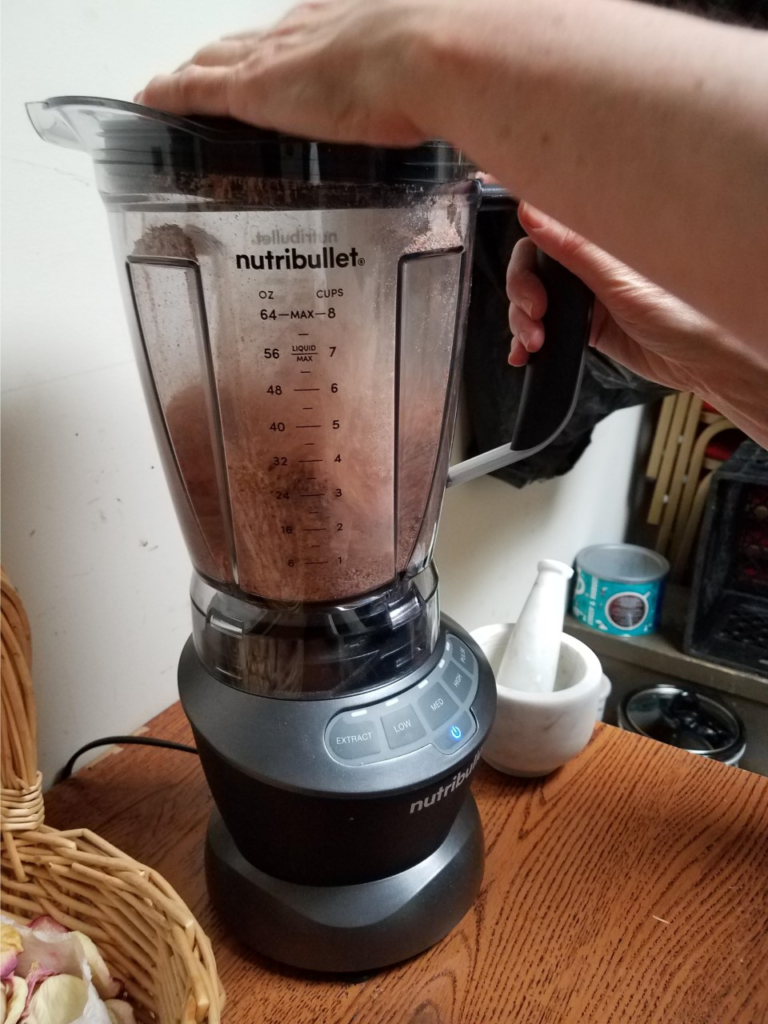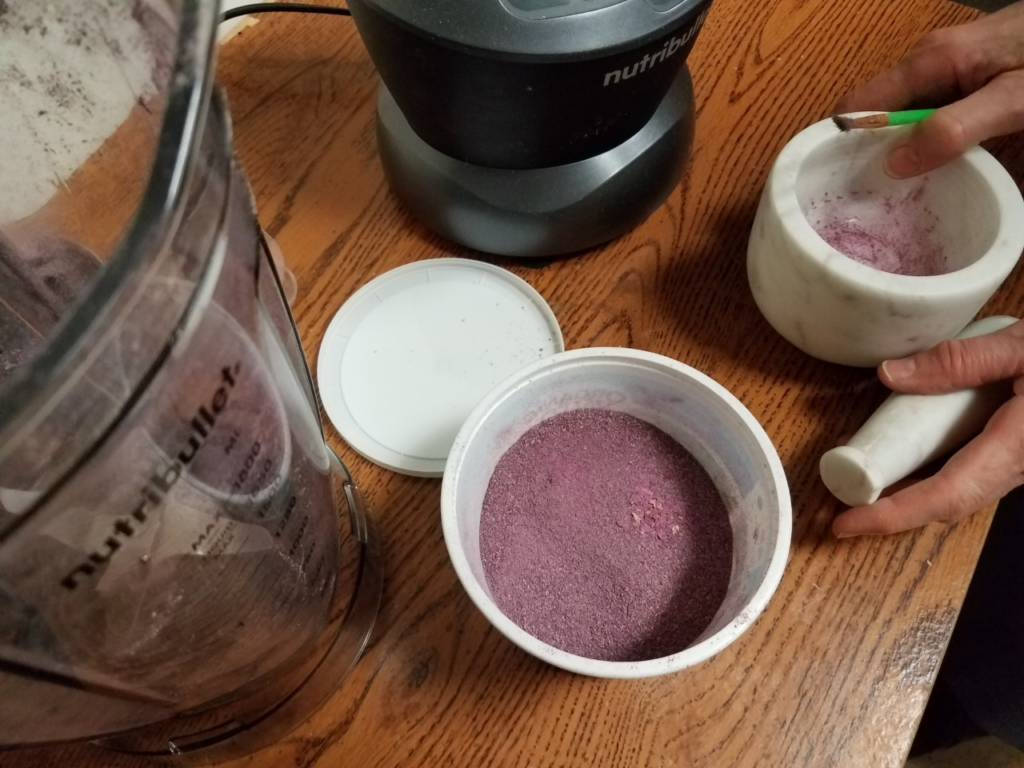Touching Heaven and Earth: From Rose to Rosary
Step 2: Griding the Dried Petals
Join us in reading a guest blog series by Sr. Orianne Dyck, a Novice with the Daughters of St. Paul, as she reflects upon the process of creating Rosary beads from rose petals.
When rose petals are dried, they discolour. Romantics may say they have their own beauty. Pragmatics would say they look dried up, brittle, ugly, and dead. But we know that God uses what is dried up to bring renewal, to heal.
He does it in Scripture.
Remember Ezekiel? “The hand of the Lord came upon me, and he brought me out by the spirit of the Lord and set me down in the middle of a valley; it was full of bones. He led me all around them; there were very many lying in the valley, and they were very dry. He said to me, “Mortal, can these bones live?” I answered, “O Lord God, you know.” (Ez 37:1-3).
If you’ve read the rest of the story you know that God basically renews the lives of an entire valley full of people from those dry bones, the first tangible sign of the promise of the resurrection. In doing so, He shatters our fears and dire expectations of death, bringing a hope that surpasses what our knowledge can attain.
This is the hope that springs from what is dry and dead. It is a hope that heals.


David talks about all this in the Psalms. He speaks of feeling dried up, and thirsting like a dry land without water… but when he remembers that faithful, life-giving love of God for him, he gets this burst of determination to keep on going (Psalm 63). Speaking of that same love in another Psalm, he states: “He heals the broken-hearted, and binds up their wounds” (Psalm 147:3). David knows what it means to be dried up. And he knows that God uses what is dry to bring new life, and to heal. He is Life-Giver, and Healer.
What does all this have to do with rose-petal rosaries?
He is about to use our rose petals to do the same thing.
Once the rose petals are dried, they are ready for the next step, and it can seem like a brutal one: they have to be ground up. Traditionally, the nuns who perfected this art would grind the dried petals with a mortar and pestle. Sr. Helen and I used one to grind a few stray petals we found when we thought we were done. But for the rest, we used a more modern equivalent: a blender.
LFor a split second, before Sr. Helen turned on the blender full of those beautiful, precious petals I had dried and prayed over so caringly, I cringed. They were about to get demolished. But then I remembered that this process of drying and grinding plants has been an essential method of making medicine for centuries. In fact, we still use this method today! You might even have some medicinal plants native to your area, or growing in your garden, whose healing powers are harnessed through this process. From ginger tea to tumeric supplements, the plants we rely on are dried and ground in a way that brings healing to people’s bodies. In fact, God reveals over and over, through indigenous wisdom and modern scientific discoveries, that he has provided for our healing through nature in this way. The more we learn about the properties of plants, the more we discover that their Creator is our Healer.
As a ground plant may have the power to heal our bodies, so the rosary does for our souls.
As the blender motor raised to a loud pitch, the petals caught in the blades and went almost instantly from their fibrous heart-shape into a fine flour-like powder. This grinding of the dried roses was creating a medicine. The fine powder of the ground petals is the foundation of the rosary. Why? Because it can be worked with water into a clay to form the beads… the same beads that will one day guide someone through their sojourn alongside Mary to Jesus in a personal prayer encounter that will bring them hope and healing in their daily struggles.


These ground up petals will prove an even stronger medicine than the ground up plants in my supplements… these ground petals will bring a wounded soul face-to-face with the Divine Physician. In this stage, that is my prayer for whoever will hold these beads to pray with. And I am reminded of Jesus’ promise to the centurion who prayed for his servant: “I will come and heal him.” (Matthew 8:7).
